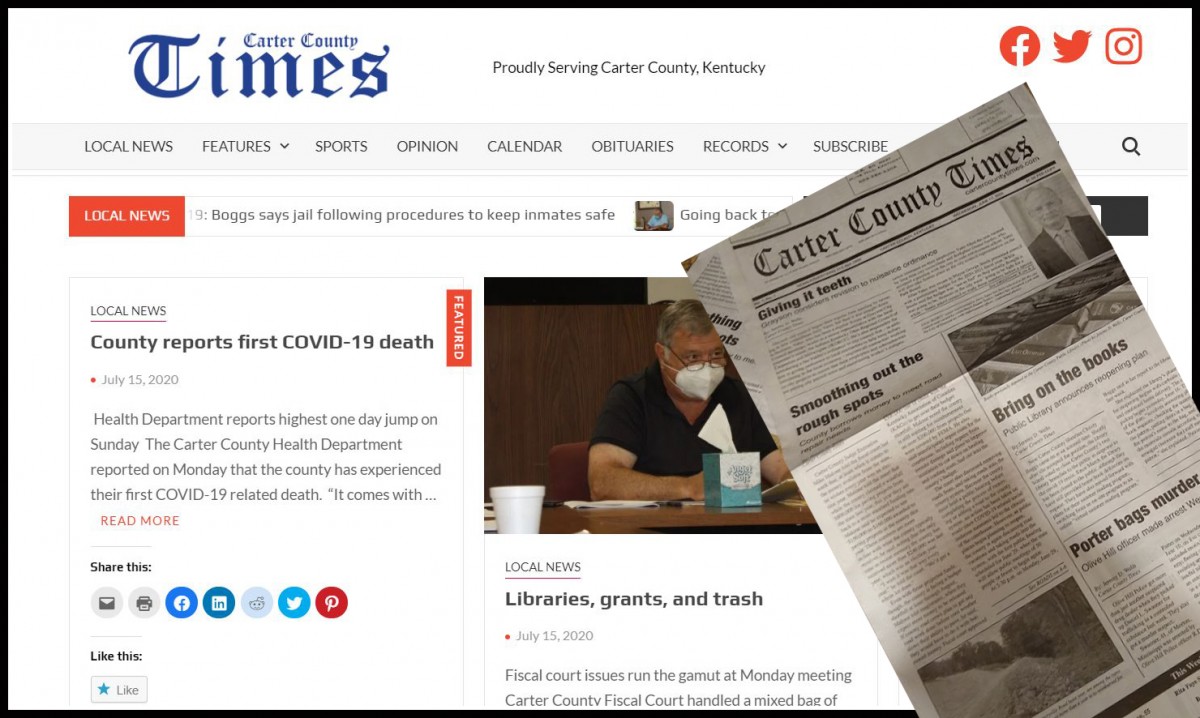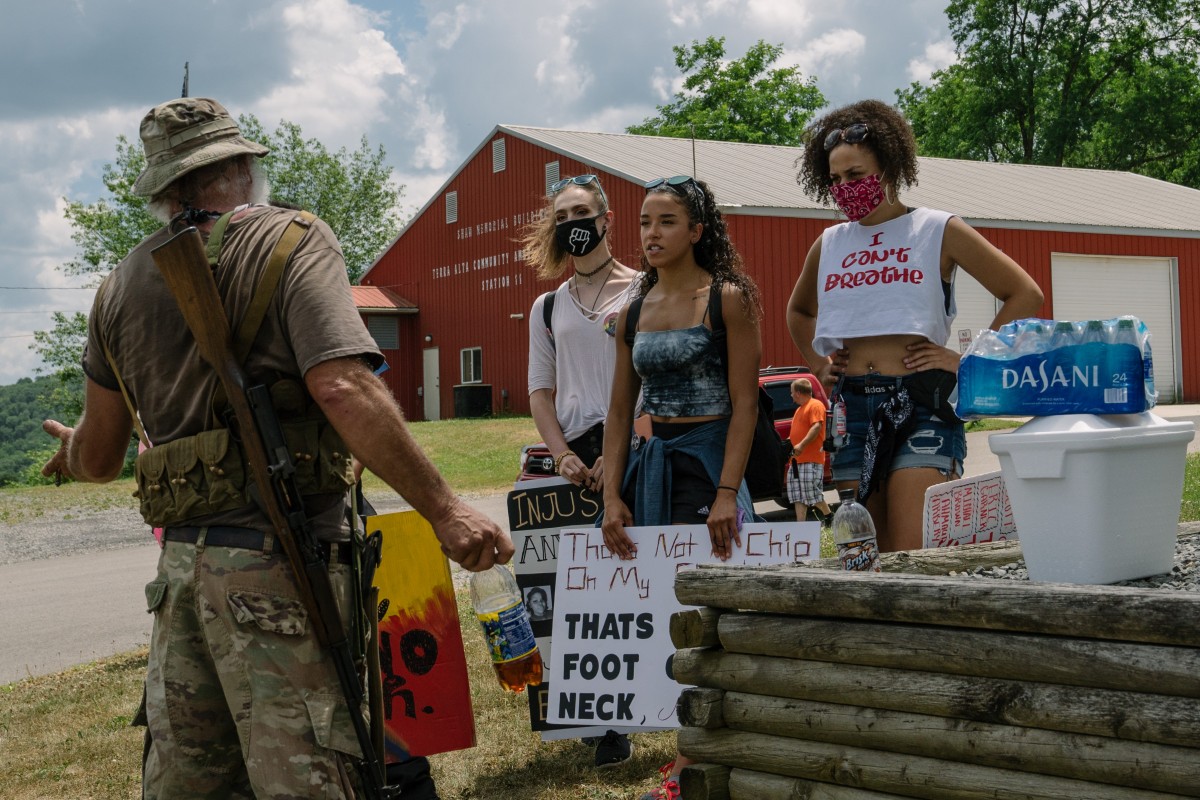Cancelation of the Atlantic Coast Pipeline project and a judge’s order to shut down the Dakota Access Pipeline injected activists with fresh enthusiasm, but these legal victories are far from being the pipeline’s swan song.
Theresa “Red” Terry and her daughter spent 34 days living in the treetops trying to block construction of a 42-inch-wide gas pipeline through her family’s property in Virginia’s Blue Ridge Mountains.
They were eventually forced down by a court order, and the minute Red’s feet touched the ground, chainsaw crews emerged to cut down her oak and maple trees. They were thwarted by an angry crowd of Red’s supporters and police who intervened to prevent violence, but early the next morning, the crews returned to finish the job.
That was more than two years ago. The trees remain on the ground today, piled the way they fell in May of 2018.
“Every time I go out there, I feel like someone stomped my heart,” said Terry in mid-July. “I feel like the whole mountain has been given cancer.”
The Terry property, which has been in the family for seven generations, contains family residences, an orchard, a multitude of wildlife, and the upper reaches of Bottom Creek, a pristine mountain stream that forms the headwaters of the Roanoke River. The land also falls in the path of the Mountain Valley Pipeline (MVP), a planned 303-mile natural gas pipeline running from the fracking fields of the Marcellus and Utica shale formations in northern West Virginia to a terminal in southern Virginia that feeds into the East Coast pipeline network.
MVP was announced in 2014 as part of a wave of similar projects, including the 600-mile Atlantic Coast Pipeline (ACP) from West Virginia through Virginia to North Carolina, and the Western Marcellus Pipeline, planned to run along a similar path as MVP.

Western Marcellus never got off the drawing board, and the ACP was canceled in early July after six years of regulatory and legal battles, which caused the project’s cost to balloon from roughly $5 billion in 2014 to $8 billion in 2020. The day after the ACP was canceled, a federal court ordered the Dakota Access oil pipeline to shut down.
Anti-pipeline activists celebrated the double shot of good news and enjoyed renewed hope that other pipelines like the MVP might be stopped.
The two successes offered vindication for a national tide of opposition against large-scale transmission pipelines, which achieved national prominence beginning 10 years ago with the fight against the Keystone XL pipeline system between Alberta, Canada, and points in Texas, Illinois and Oklahoma.
Over 2016 and 2017, roughly 15,000 people gathered at the Standing Rock Indian Reservation to protest the Dakota Access Pipeline (DAPL). Standing Rock became a galvanizing moment for anti-pipeline activists, providing inspiration and training for Native, Black, Hispanic and white activists in battles against other pipelines around the country, including MVP and ACP.
More Fights Ahead
But since the wins in early July, a series of twists suggest the fight against natural gas infrastructure will continue for some time. A U.S. Appeals Court granted DAPL an administrative stay so it can continue to operate while the court deliberates. Additionally, the U.S. Supreme Court dramatically reduced the scope of a U.S. District Court ruling that factored into the ACP’s cancellation.
In a case involving the Keystone XL pipeline, the lower court had ruled in April that the Army Corps of Engineers failed to adequately consider endangered species when it issued what’s known as Nationwide Permit 12. That particular permit was used by dozens of pipelines because it allowed them to win approval to cross multiple waterways through a single process, instead of applying for individual permits for each stream and river. The U.S. District Court not only halted the use of Nationwide Permit 12 for Keystone XL but applied the ruling nationwide. The Supreme Court restored the use of the permit everywhere except with regard to Keystone XL.
These developments are only the current hotspots in a long-running legal, political and regulatory battle that’s playing out around the construction of natural gas infrastructure throughout rural America. The Trump administration is rolling back regulations around oil and gas, and seeks to weaken the National Environmental Policy Act to speed up pipeline permitting. Various states have passed laws to stiffen penalties for pipeline protesters.
At the same time, clean energy sources like solar and wind have dropped in price. Dominion Energy, one of the partners in the ACP, sold its natural gas storage and transmission assets to Berkshire Hathaway Energy as part of an effort to attain net zero carbon and methane emissions by 2050. A growing number of oil, gas and fracking firms are filing for bankruptcy amid an industry-wide price war and the coronavirus pandemic’s effects on demand.
“If you look five or six years ago, many more people just thought we were going to need more gas supply,” said Nathan Matthews, senior attorney at the Sierra Club. “Now it has become really clear, not just to the Sierra Club but to state regulators, elected officials, and utilities, that we just don’t need any more natural gas. We have an adequate supply.”
The current industry landscape, along with the examples of projects like the ACP and MVP—both of which have seen significant delays and escalating costs—looks stacked against the prospect of similarly scaled transmission pipelines.
“I would expect to see fewer proposals for new gas pipelines,” Matthews said. “I don’t know how sudden that shift will be, but the breadth of opposition to pipelines is much broader, states are applying more scrutiny, and we have gotten better at mounting these challenges.”
No Easy Answers
The question of whether MVP can be stopped is more complicated. In June, MVP estimated that construction is 92 percent complete, with the pipeline set to begin service in 2021.

Yet MVP construction remains stalled under a stop work order by the Federal Energy Regulatory Commission, handed down after the U.S. Court of Appeals for the 4th Circuit froze a permit from the U.S. Fish and Wildlife Service for four endangered or threatened species. Those four species include two fish—the candy darter and Roanoke logperch, and two bats—the Indiana bat and the northern long-eared bat.
Additionally, MVP still needs permits to cross 3.7 miles of the Jefferson National Forest and the Appalachian Trail, both of which have been delayed since 2018.
One of MVP’s biggest obstacles involves permits to cross waterways, issued by the U.S. Army Corps of Engineers. It applied for those permits through the Nationwide Permit 12, which essentially allows for one big approval instead of obtaining a separate permit for each waterway. MVP ran into trouble in West Virginia, which required a series of conditions that MVP couldn’t meet. As a result, the same 4th Circuit court that froze its wildlife permit also pulled the pipeline’s authorization to cross waterways in West Virginia. Because of an Army Corps’ policy, the agency subsequently blocked MVP’s permits to cross waterways along the entire route.
West Virginia later eased its water quality conditions, but the authorizations remain in limbo. MVP, meanwhile, has filed requests with FERC to change numerous stream crossings from digging up the river bed to drilling beneath it, which doesn’t require Army Corps approval.
On top of the legal and regulatory blockades, a group of protesters have maintained tree-sits and a support camp near Elliston, Virginia, for what will be two years in September. A third tree-sit recently went up there.
All of this leaves landowners along MVP’s route uncertain about the future.
“It’s hard to fight,” said Becky Crabtree, a retired teacher in Monroe County, Virginia, whose farm lies in the pipeline route. “We did everything we knew to do”—including packing meetings, writing to elected officials, submitting public comments and fighting the pipeline in court. She even tried to block construction by locking herself to her old Ford Pinto, which straddled the trench dug through her land.
“It didn’t do much—maybe delayed a half a day’s work—but it felt right,” Crabtree said.
Across the state line near Blacksburg, Virginia, retired engineering professor Robert Jones and his wife were preparing to sell their house when they learned MVP planned to route the pipeline 170 feet from their front door. The pipeline route runs from a ridge behind their house down a steep, near-45-degree slope to Mill Creek. Although MVP laid the pipe and replanted the 125-foot-wide right-of-way nearly two years ago, it’s still largely bare.

Jones, now 81, has all but given up any hope of selling his home, but, like Crabtree, he’s fought the pipeline for years and doesn’t plan on giving up soon. From his house, he can see 15 miles across the Great Appalachian Valley to the Blue Ridge Mountains on the other side, where Poor Mountain rises up.
Just on the other side of that ridge, Red Terry still grieves the old-growth forest that’s now on the ground, where it’s lain for more than two years. She and her husband Coles are still battling the pipeline, as MVP’s eminent domain case against them has yet to be resolved.
When she came down from her 34-day tree sit, Red regularly woke up during the night, covered in sweat and shaking in terror.
“It got to where I couldn’t eat, couldn’t sleep, just worrying about how much they were destroying these beautiful mountains that we’re the stewards of,” she said. “I just recently stopped doing it all the time, but I still wake up sometimes, just feeling like i’m being choked by the stress. I know it’s not good for my health, and I just can’t seem to get away from it. As long as that threat is there, and as long as I know they’re going to destroy every bit of my land, it wakes me up at night.”
Still, her message to others facing pipelines coming through their communities hasn’t changed.
“These people need to fight it for everything they’re worth,” Terry said. “Never give up.”
This article was originally published by the Daily Yonder.



